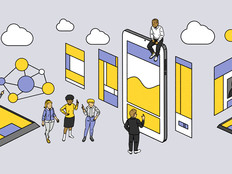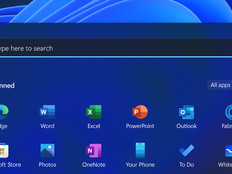Oregon State University Athletics Soars Thanks to an Innovative IT Team
IT professionals in higher education often want opportunities to play more strategic roles in their institutions, but in practice, the degree to which they can do so varies widely among campuses. At Oregon State University, the IT staff in the athletics department created such as opportunity as part of a strategic plan that Athletics Director Scott Barnes kicked off in early 2017.
At the time, IT Director Tim De Quilettes recognized that his team faced an uphill battle.
A history of high turnover in the athletics department's IT staff had eroded relationships and confidence among other campus departments. Personnel and equipment resources were limited, and vast sources of potentially valuable data went unused. IT activities were chaotic on game days and, in general, reactive rather than proactive.
De Quilettes had a different vision in mind: an entrepreneurial, proactive team that leveraged expertise, talent and innovation to solve problems for staff and to deliver new solutions that the department had never before used.
"We took that initiative to go out there and do assessments: Where are we sitting technologically? What are we doing technologically? What should we be doing?" he says.
MORE FROM EDTECH: See how data analytics is changing the playbook for college athletics.
Innovative Approaches Shift Campus Perception of IT Department
Key to the effort was a deliberate effort to rebuild trust and change the perception of the IT department. De Quilettes' team did so, in large part, by identifying and pursuing opportunities to use technology to improve work processes and outcomes throughout OSU Athletics.
In one major project, his team designed and launched a robust data analytics initiative that has since helped more than a dozen OSU sports teams glean data-driven insights into athletes' training and performance. The IT staff had recognized that while the athletics department collected a lot of sports-related data, no one was using it effectively to enhance the sports program — that is, until De Quilettes and his team led the way.
Systems Engineer Charles Siebert built a proof of concept for the baseball coaches that used data to predict how their team would fare against a rival team. Once the coaches saw the dashboard, they realized the vast potential possibilities of bringing in additional data sets to expand the analysis.
"They were pretty excited," Siebert says.
The data initiative quickly expanded as the IT staff figured out new ways to use Power BI and SharePoint to collect, analyze and share data among coaches, trainers and support staff. Because each sport has different needs, De Quilettes' team has custom-designed each solution, often creating systems where they didn't exist.
Most recently, they developed a new type of scoring software for the gymnastics team. For the swim team, they figured how to collect information about swimmers' form using slow-motion cameras that capture thousands of frames per second. They've also worked with the basketball, football, golf, gymnastics, soccer and volleyball teams, along with sports medicine, training and support areas.
The potential to use data to inform the way athletes train, recover and ultimately perform is significant, says Siebert. "The potential that could come from all of this and what's on the horizon is that this is, or it should be, really part of the day-to-day workflow for every sports department," he says.
Technology Enhancements Save Time for OSU Athletics Staff
Other initiatives have included upgrading the data center, developing a technology-enhanced control booth in Reser Stadium to improve public safety operations and putting Microsoft Power BI and SharePoint to work in multiple ways to drive efficiencies, cost savings and workflow improvements throughout the athletics department.
"Over time, the understanding came about that we were doing things differently," De Quilettes says. "That actually garnered very positive attention for us because we established ourselves as being a group of individuals that were very talented and that knew what we were doing and how to do it."
They've done so, among other ways, by showing how smart deployment of technology solutions can save time, money and effort for OSU employees, says Rocco Malo-Resta, senior systems engineer.
"If we watch somebody's job for a couple of hours and see what it is that they're doing and how they're doing it, we can find ways to streamline that process almost every single time," he says. "And it saves hours and hours of work on a weekly basis for people."
Today, the IT team is a "well-oiled machine," De Quilettes says — on game day and every other day.









